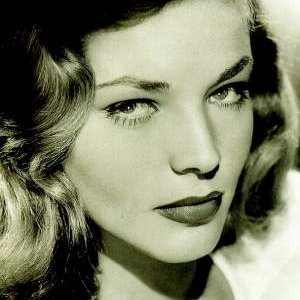This Lady Says I'm an Artist
Astrid: Your husband's work is what we call "outsider art". It could be by a mental patient, or a hillbilly, or a chimpanzee.
Homer: [gasps] In high school I was voted most likely to be a mental patient, hillbilly, or chimpanzee!
Part of my art-appreciation project is trying to learn to control my rage over such things as Abstract Expressionism. Actually, it's not the works that annoy me, but their critical acclaim. If someone would just explain to me why they are worth my attention, maybe I would appreciate them more; but no-one ever does. It's just art-appreciation by authority (regardless of one of the NY Times' art critics' protestations to the contrary. Lady, you're an art critic for the NY-freakin'-Times — like it or not, you exert a not-insubstantial influence), using florid art-speak whose wealth of vocabulary and construction seems mainly to function as a distraction from its poverty of actual meaning.
Here's what drives me nuts.
I know enough not to say there's good and bad art (rather, art and not-art — duh). But there is historically and/or critically influential art, and art that lacks such influence. So far, so good.
Some of the modern artists have extolled the virtues of childlike art practices. What I want to know is, why aren't kindergarten and grade-school projects showing up in the museum galleries? That's the real deal, complete with authenticity. But no; if they do show up, it's only as part of a short-term burst of popularity. It's Pollock that'll stay in the galleries for decades, not the kids, hillbillies, or chimps. So how, I would like to know, is that not just a fad? What do Pollock et al. have that no kid, hillbilly, or chimp ever did? Why do the Pollocks get the attention?
And it's not just in visual arts. When I heard Schoenberg's Pierrot lunaire (Op. 21), my first thought was, I "sang" like that in my room all the time as a kid! Only I was just being silly. I would venture to say that kids the world over have been making such sounds for millenia, and decorating refrigerators with their drawings for decades.
Now, the art world likes to claim that noteworthy art has value in and of itself, regardless of time, place, artist, &c., &c. Thus the "minimalist" text labels that accompany many of them (artist, date, medium). Two points can be made about this. First, if the art has inherent noteworthiness, shouldn't they hold back on the date and artist? Unless you're an idiot, the date will have some historical significance to you; and unless you were reared by barnacles, deeply cultural structures like gender associations will color your responses.
Second, if the value is inherent, then it should be objective, it should be material, and it should be able to be pointed out without resorting to phrases like "whimsical without a hint of condescension". Remember, ladies and gentlemen, that artworks are inanimate, and thus lack the ability to have emotion. Any emotion seen is a reflection of the observer's history, psyche, cultural competence, and knowledge of the work's creative context.
So, again, I ask what Pollock and Schoenberg had that my 3-year-old friend doesn't? Or, to put it the way I really mean it, why, when people were looking for whatever it was they found in those two and their ilk, did they turn to them instead of to the kids, hillbillies, and chimps? If the latter are artistic outsiders, is there not something of the dues-paying nature at work in the normal operation of the art world? And what does that say about the inherent value of noteworthy (or even not) art?
The artistas say that lots of 20th C. artists were of great importance. Fine. But it's not like they were doing anything that kids, hillbillies, and mental patients haven't been doing all along. I mean, Mozart's childhood prodigy was the maturity of his creations at such a young age – he was doing what the other kids weren't.
It seems to me that if art is truly art because of its inherent character (and I'm not saying it is, mind), then to be an artist is an emergent condition, not an avocation. Then we would get into the art world as cause and consequence of its own commodification (and the implications thereof for artistic purity, integrity, and), and I don't really want to get into that right now.
At the moment, I strongly suspect that a leading criterion for artistas' interest in original art is novelty; I actually heard Ms. NY Times Art Critic say almost as much. What, pray tell, has that to do with artistic expression qua art? It rather seems like an historically specific characteristic of contemporary art appreciation.


0 Comments:
Post a Comment
<< Home